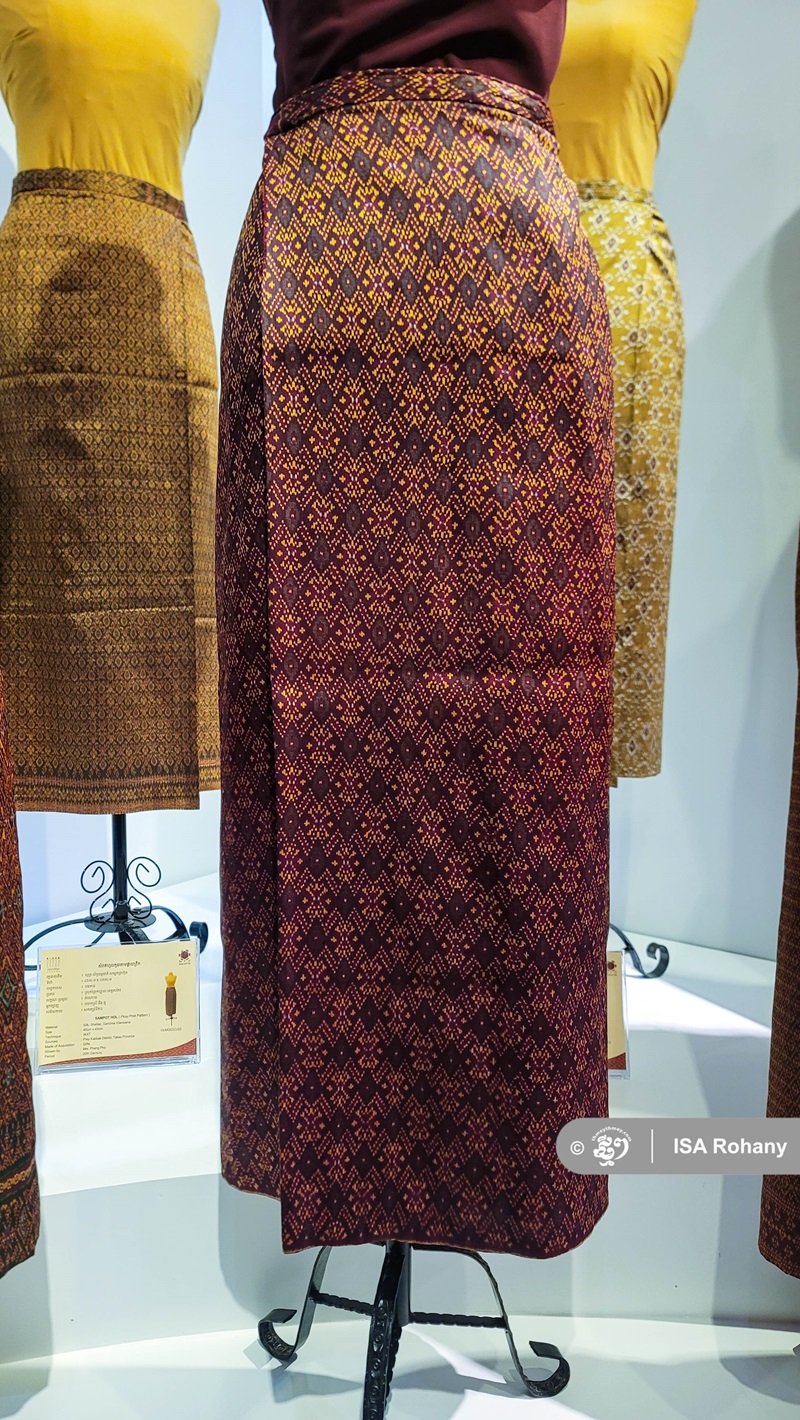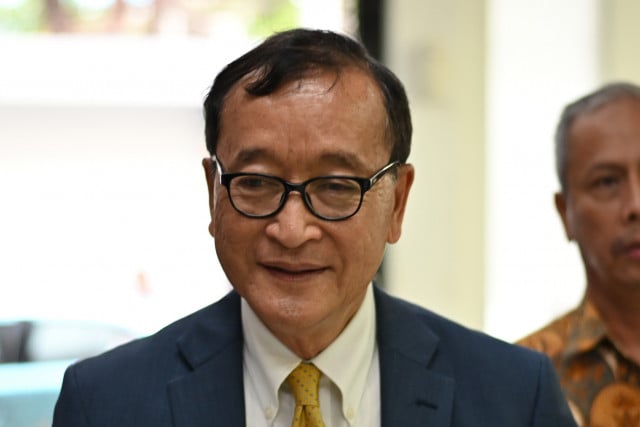An Exhibition in Siem Reap Celebrates Cambodia’s Tradition of Fine Fabric and Clothes
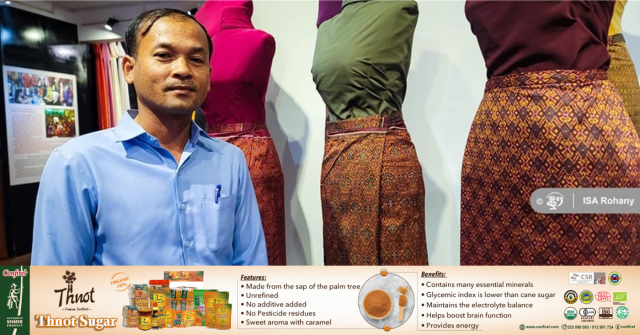
- By Isa Rohany
- February 11, 2024 8:00 PM
SIEM REAP— A collection of Khmer traditional clothes made by people of Prey Kabbas district in Takeo province is currently on display in a temporary exhibition at the Museum of Asian Traditional Textiles of the Apsara National Authority in Siem Reap province. The pieces include the sampot phamoung and sampot hol, which are variations on the traditional wrap-around “sampot” skirt made with specific styles of handwoven textiles, and an av phnat kbach, which is a woman’s formal blouse. As Sen Kimsun, deputy director of the museum, explained during an interview, the pieces were donated by people of this community to the museum, which decided to hold an exhibition to make people aware of the traditions reflected in these works. The exhibition opened on Feb. 9 and will remain at the museum for six months. Thmey Thmey’s Isa Rohany interviews Kimsun to explore more about the event.
Isa Rohany: Could you please provide us with a detailed explanation of the exhibition?
Sen Kimsun: We decided to hold a temporary exhibition in this museum when our team received a collection of 51 Khmer silk crafts…on May 18, 2023. However, before putting them on display, we had to undertake some work. This included registration, maintenance, cleaning, and repair [needed in some cases]. As per the general procedure [to include the works in] the museum's collection, we registered each piece before holding the exhibition. Afterwards…we chose 21 items out of the 51 in the collection to be displayed. The selected items include many styles…with different colors and patterns, such as khbach phka chan (star anise pattern). One of the items is a Battambang-style silk skirt made 52 years ago and that was donated by Ly Nay Srim, who is now 75 years old. Nay Srim had taken care of this piece of clothing since the Pol Pot regime [1975-1979], during which she had hidden the silk skirt in a pillowcase, fearing it would be taken by the Khmer Rouge. This silk skirt was her favorite, and she had only one left after the fall of the regime. However, she said she had decided to donate it to the museum so it could be exhibited for the public, and especially for the younger generation.
Among patterns, there is also the beehive style. Such fabric also has a decent lifespan of 50 years. Out of love, the owner did not turn this fabric into any clothes. The owner had received it from her mother. These examples show that some pieces in this collection are items that the owners weaved for personal use, while some were made as gifts such as from mothers to daughters…For the exhibition, we have combined the pieces to create beautiful displays to highlight the Khmer fabric and clothing tradition. I think that today most of these pieces of clothing are worn for events such as traditional festivities and weddings.
Isa Rohany: Is the fabric used for these pieces of clothing still being made today?
Sen Kimsun: The people of Prey Kabbas are still doing this, and all the clothes are made the same way as their grandparents did, which means traditional knowledge has been continuously passed on from one generation to the next. There is a community that continues weaving works, and there still are looms in their houses.
Isa Rohany: Is the exhibition meant for people who want to see traditional clothes as well as those interested in this tradition, who would like to know more about the crafts of the Prey Kabbas people, and even learn this trade themselves?
Sen Kimsun: Yes, indeed. The purpose of the donors and the museum for displaying these traditional pieces of clothing such as skirts, shirts and blouses at this stage is for the public in general as well as the younger generation to see the work of the people of Takeo province. They inherited this from their ancestors; some of them are 80 or 90 years old but continue weaving. We could say they want to show their children the different types of patterns, the art of craftsmanship, and the designs for these textiles such as finding out about phamoung and hol, which are traditional clothes of our country.
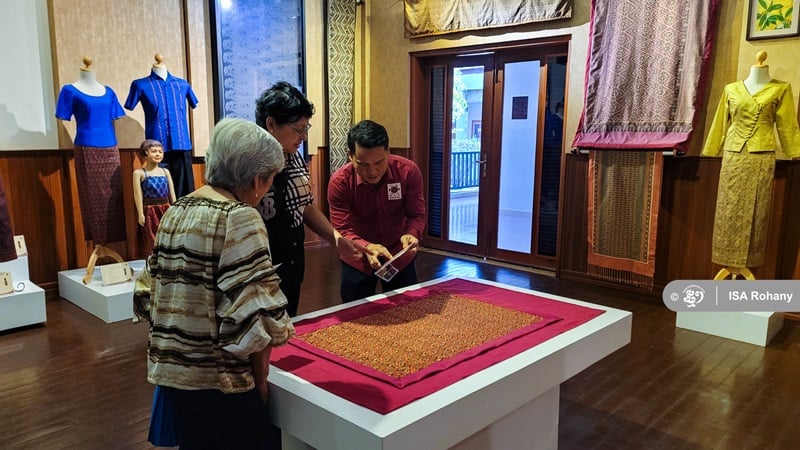
Isa Rohany: Have we ever studied how many styles there are for our Khmer phamoung and hol designs for example?
Sen Kimsun: I do not dare guess how many, but through existing documents as well as research, 1,000 to 2,000 patterns left by our ancestors have been identified. And now, there are new designs used to make our silk crafts more unique and up-to-date. But overall, what I am saying is that there are no actual documents focused on the total number of styles in our traditional costume designs yet. But the pattern I am sure of is khbach phka chan. This has a connection to the story of Prince Preah Thong and Naga Princess Neang Neak. Such a pattern can also be found on sculptures on our temples, especially at the Angkor Wat temple, and we can find that pattern in our traditional garments.
Isa Rohany: What do you think might be people’s most favorite patterns when it comes to weaving phamoung and hol?
Sen Kimsun: Our traditional costumes are diverse, and their use is different from one era to another. Nowadays, we see a lot of different patterns that are woven into skirts or shirts. But the first thing I want to emphasize is khbach phka chan.
Isa Rohany: As you said earlier, some of the items in this exhibition are over 60 years old, and people who have agreed to donate them to the museum must be confident that the museum will take good care of these pieces. One of the donors did all she could to protect hers since the time of Pol Pot. How does the museum manage to take care of all these priceless collections?
Sen Kimsun: This is a very good question. Of course, this is what the donors want. They want the museum to continue to preserve their possessions because now they are at least 70 or 80 years old, meaning they cannot preserve them well. Here in the museum, we have a team working on the preservation of textiles. The first stage of work is conservation. Items we receive from philanthropists or from elsewhere have to be under proper conservation such as going through cleaning and repairing so that they can continue to last. We have guidelines to ensure that the collections are not affected or damaged. In the meantime, when placed in the gallery, we have protective equipment to prevent insects from entering the gallery. When visitors come, we do not allow them to bring drinks or food in the museum, and our space for standing is wide so that people cannot touch or stand close to our items on display. Touching is prohibited as our hands contain acidic and salty substances that can affect the materials.
Moreover, as a principle of conservation, we also think about the exhibition period. We cannot hold the exhibition forever. It lasts a maximum of six months for now. This is done to prevent the color of the fabrics and materials from fading as they could be affected by light bulbs, temperature, and other factors.
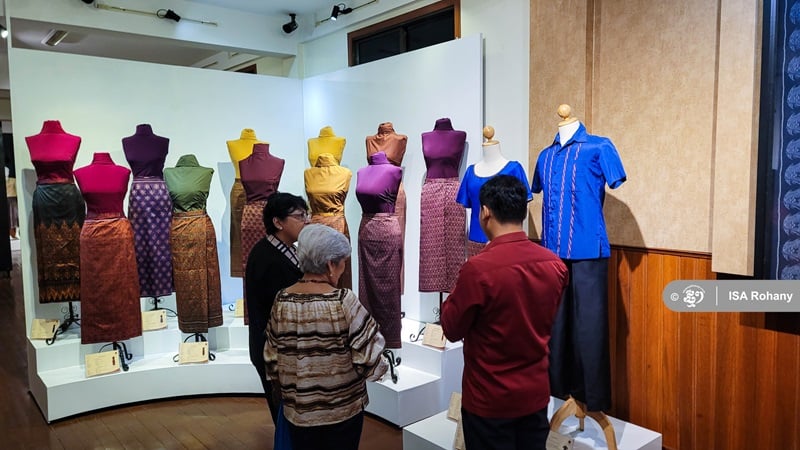
Isa Rohani: Does that mean that the museum has storage areas?
Sen Kim Sun: Yes, we have a conservation room to store all the collections we have not put on display. We also have devices to monitor the temperature in the conservation room as well as in the gallery. We control the temperature to prevent the temperature from rising too high. It is because when the temperature is high, it can be humid and make things problematic.
Isa Rohany: What would you like to tell the public about this exhibition?
Sen Kimsun: I think the public, both young and old, should come and visit to be a part of the journey and find out what kind of clothes their ancestors wore, and also the process, that is, how long they took to design and weave the fabrics for traditional costumes. Through this, I want to appeal to the public to come and see it as a way of appreciating and valuing our textile tradition, especially in the case of phamoung and hol which have been around for a long time. These traditional crafts are now popular, attracting people from all walks of life and different countries around the world.
